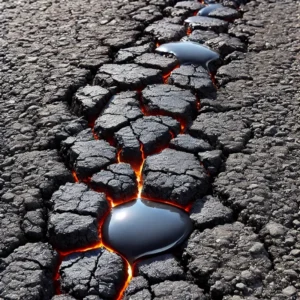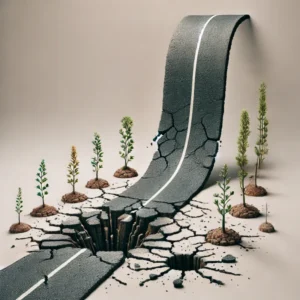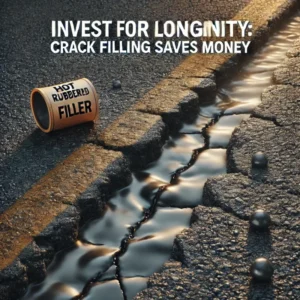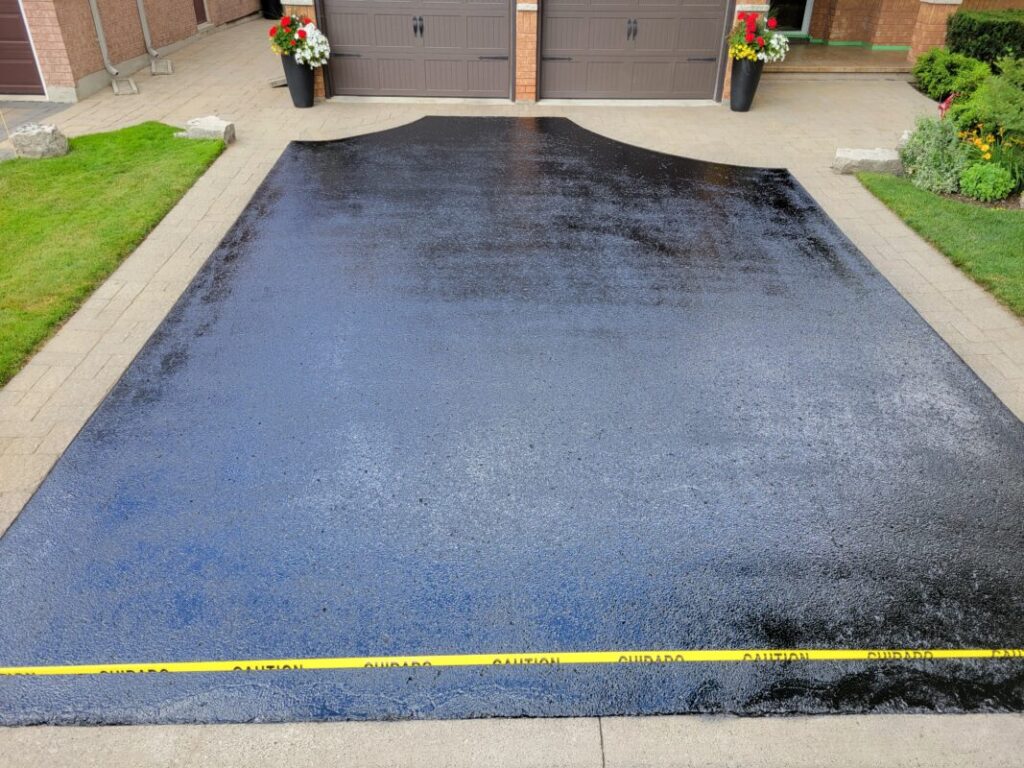Cracks in asphalt happen. But the way people talk about them? Full of myths. At No Limit Sealing, we hear the same misconceptions over and over. Some myths cause unnecessary delays. Others lead to costly mistakes. Today, we’re busting the biggest ones.
Myth #1: Crack Filling is Only for Old Pavement

New asphalt can crack, too. Heavy traffic, shifting ground, and temperature changes create stress. The Canadian freeze-thaw cycle makes it even worse. Water sneaks into tiny cracks, freezes, and expands. Before you know it, those small cracks become big problems. No Limit Sealing recommends crack filling as soon as cracks appear, no matter the pavement’s age.
Crack formation isn’t just about age; it’s about exposure to the elements. Even within the first year of being laid, asphalt can start showing small cracks due to temperature fluctuations or pressure from vehicles. Cracks left untreated worsen quickly, leading to expensive resurfacing or even full replacement. Taking early action with hot crack filling ensures that your pavement stays smooth and intact for years to come.
 Myth #2: Crack Filling Ruins the Look of My Pavement
Myth #2: Crack Filling Ruins the Look of My Pavement
People worry crack filler will make their pavement look worse. That’s not true. Hot rubberized crack filler blends into the asphalt over time. It creates a smooth, professional finish while protecting against future damage. Plus, when paired with sealcoating, the surface looks brand new. A repaired pavement always looks better than one full of unsealed cracks!
Asphalt naturally darkens over time, and a well-done crack repair blends in seamlessly. Crack filling prevents weeds and debris from accumulating in cracks, which would make the surface look even worse. Over time, unsealed cracks can lead to larger fissures and potholes, making the pavement appear neglected. Repairing them maintains both function and curb appeal.
Myth #3: Sealcoating Fixes Cracks
Sealcoating protects the surface, but it doesn’t fix cracks. It’s like waxing a car with a dent—it looks better, but the problem is still there. Cracks must be filled before sealcoating. No Limit Sealing always repairs cracks first to ensure long-lasting results.
Sealcoating acts as a protective layer against oxidation, UV rays, and minor surface wear. However, it doesn’t provide the structural reinforcement that crack filling does. If cracks are not properly sealed before sealcoating, moisture can still seep through and cause damage beneath the surface. A proper maintenance plan includes both crack filling and sealcoating, done in the right order, to extend the pavement’s lifespan.
 Myth #4: Cracks Will Stop Spreading on Their Own
Myth #4: Cracks Will Stop Spreading on Their Own
Cracks never stay the same size. They always get bigger. Water, dirt, and chemicals seep in. Traffic pressure makes them widen. Freeze-thaw cycles make them expand. Waiting to fix them only makes things worse. No Limit Sealing uses top-quality rubberized fillers to stop cracks before they spread.
Small cracks can double or even triple in size within a single season, especially in Canada’s harsh weather conditions. Once a crack reaches a certain depth, it begins to affect the pavement’s foundation, leading to potholes and surface deterioration. Addressing cracks early prevents widespread damage and saves thousands of dollars in repairs down the road.
Myth #5: Asphalt Crack Repair is a Waste of Money
Ignoring cracks leads to major repairs. Small cracks turn into potholes. Potholes damage vehicles, create hazards, and weaken the entire pavement. The cost to replace asphalt is 10-20 times higher than the cost to maintain it. Crack filling is one of the best investments for extending pavement life. No Limit Sealing helps homeowners and businesses save money with proactive maintenance.
Think of crack filling as preventative healthcare for your pavement. Spending a little now avoids much larger expenses later. A well-maintained surface reduces the risk of liability for businesses by preventing trip hazards and vehicle damage. Parking lots, driveways, and roadways all benefit from routine crack filling, extending their usability by years.
 Myth #6: DIY Crack Repair Works Just as Well as Professional Service
Myth #6: DIY Crack Repair Works Just as Well as Professional Service
Hardware store fillers don’t compare to professional-grade materials. Most DIY fillers dry out, crack, or wash away quickly. They don’t bond deeply with asphalt, leaving gaps that let water in. No Limit Sealing uses hot rubberized crack filler, which stays flexible and expands with the pavement. It lasts years longer than any DIY product.
DIY kits often contain low-quality materials that harden too quickly, making them brittle and ineffective in extreme temperatures. Professional hot crack filling ensures a deep bond, preventing moisture infiltration and keeping your pavement intact. While a DIY repair might seem like a quick fix, it won’t provide the same durability or protection as a professional job.
The Truth About Crack Repair
Cracks in asphalt are inevitable. Ignoring them isn’t an option. Myths only delay essential maintenance, leading to bigger problems and bigger costs. No Limit Sealing provides expert crack filling to protect and extend the life of your pavement. Don’t fall for the myths—fix your cracks before they become major repair. Contact No Limit Sealing today to protect your pavement and keep it looking great for years to come. Services are available in Toronto, Richmond Hill, Vaughan, Maple, Markham, Aurora, Newmarket, Scarborough and other cities in or around the Great Toronto Area.
To Learn More About Our Pavement Crack Filling Services – Click Here
To Learn More About Our Driveway Maintenance Services – Click Here
Our Interlock Maintenance Services – Click Here











